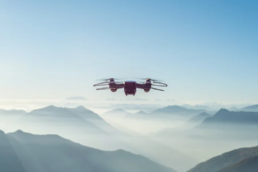What SpaceX has shown us is that there is value in exploring space. South Korea also agrees which is why they spent over 1 billion dollars since 2021 on space activities such as producing satellites (half the budget), an integrated satellite data management system, rockets, and other key equipment. In 2022 alone, South Korea plans to invested $619 million in its national space program.
The Korea Aerospace Research Institute (KARI) is the NASA of South Korea and they will be the ones in charge of advancing their national space program. While the United States, Russia, and Japan are the key leaders when it comes to space exploration, other countries such as China and India have been investing heavily in their space programs. So how is South Korea fair to these countries and what is the current state of their space program? We will go in-depth into where the space program in South Korea stands currently and its plans for the future.
The South Korean Space Program
The South Korean space program is in its infancy compared to the countries mentioned above. The yearly budget for KARI for 2023 is over $600 million. This pales in comparison to the United States which spends $22 billion a year for NASA, and Europe which spends 5.4 billion euros for Europe’s ESA. Furthermore, South Korea’s space research budget is one-third the size of Japan’s (JAXA). However, South Korea has the potential is rapidly catching up to these countries based on their alliances.
International partnerships will be key for the Space program in South Korea. Through these partnerships, they will not have to build an expensive space infrastructure from the ground up. By leveraging the space capabilities of other countries, South Korea can quickly catch up. Space collaborations are very common. NASA for example has pursued many international cooperation programs.

In July 2020, SpaceX launched South Korea’s very first exclusive military communications satellite called the Army Navy Air Force Satellite Information System-II (ANASIS-II). Moreover, South Korea successfully launched its carrier rocket called Nuri (200-ton KSLV-2) in 2021. The three-stage KSLV-2 reached its intended altitude but failed to put its dummy payload into orbit due to its liquid-fueled supper stage shutting down early. Still, it was a huge step for the further development of Korea’s space capabilities.
South Korea’s Satellite Projects
The ultimate goal will be to send up multiple satellites at once. In addition, they also launched a next-generation medium-sized satellite. A Korean mid-sized satellite on Russia’s Soyuz rocket was launched in March of 2021 from the Baikonur Cosmodrome in Kazakstan. The purpose of the satellite is to monitor urban areas and topographical features and design maps.
Satellite projects get the majority of the space budget ($277). The CAS500-2 and KOMPSAT-6 Earth-observation satellites could be launched this year. $70 million of the budget will go to the Korean Positioning System, a constellation of 8 navigation satellites South Korea will deploy between 2027 and 2034.
The Future of the Space Program in South Korea

2 multipurpose observation satellites were sent into space. Furthermore, a microsatellite constellation is being developed. However, the biggest news regarding the future of the space program in South Korea is their commitment to moon exploration. Close to $50 million will be set aside for developing Korea’s first lunar orbiter. The Korea Pathfinder Lunar Orbiter, which was launched in August 2022 aboard a SpaceX Falcon 9 rocket, will to programmed to take images of the moon.
South Korea started a follow-up rocket program in 2022. The program will aim to launch a more powerful rocket in 2029. This is currently a big issue due to the possible military applications. In addition, there is the possible development of a long-range missile program. This will draw eyes not only from North Korea but also from China. However, having a strong rocket/missile defense program will be critical moving forward as North Korea continues to refine, expand, and test its missile capabilities.
Make no mistake, North Korea is and will continue to be the primary driver of South Korea’s missile program. The department in charge of the missile program in South Korea is South Korea’s Agency for Defense Development (ADD). However, they will need to follow strict guidelines set through the U.S.-South Korea missile guidelines (set up in 1979) which have been revised as early as July of 2020. Furthermore, South Korea will continue to improve its intelligence, reconnaissance, and surveillance capabilities against North Korea through military surveillance satellites. Future successful launches of surveillance satellites in particular will allow South Korea to not fully depend on the United States for their surveillance to monitor North Korea.
Related Posts
The Future of UK-South Korea Relations
February 17, 2023
Will Bank of Korea Launch Digital Currencies in Korea?
August 21, 2023






